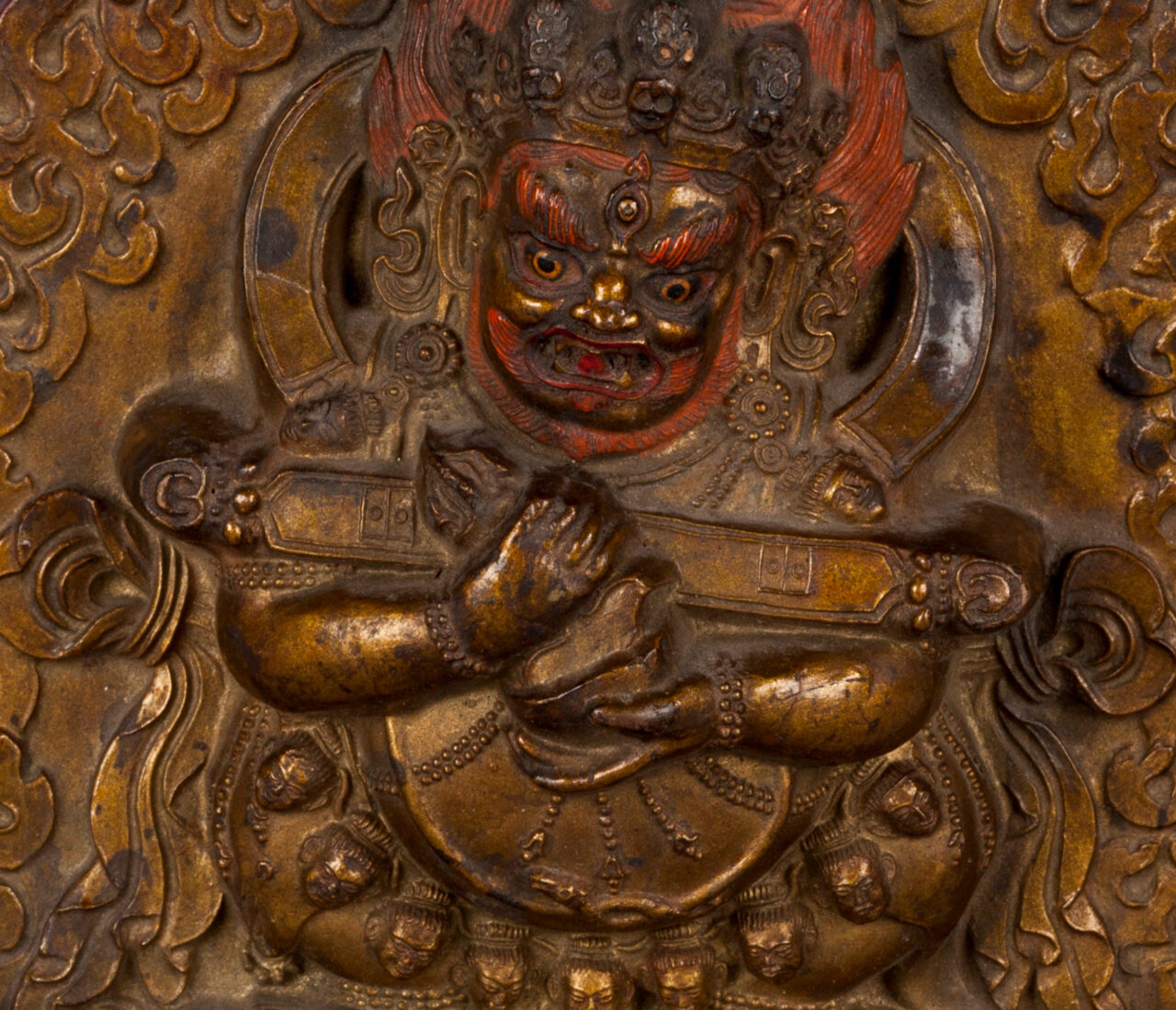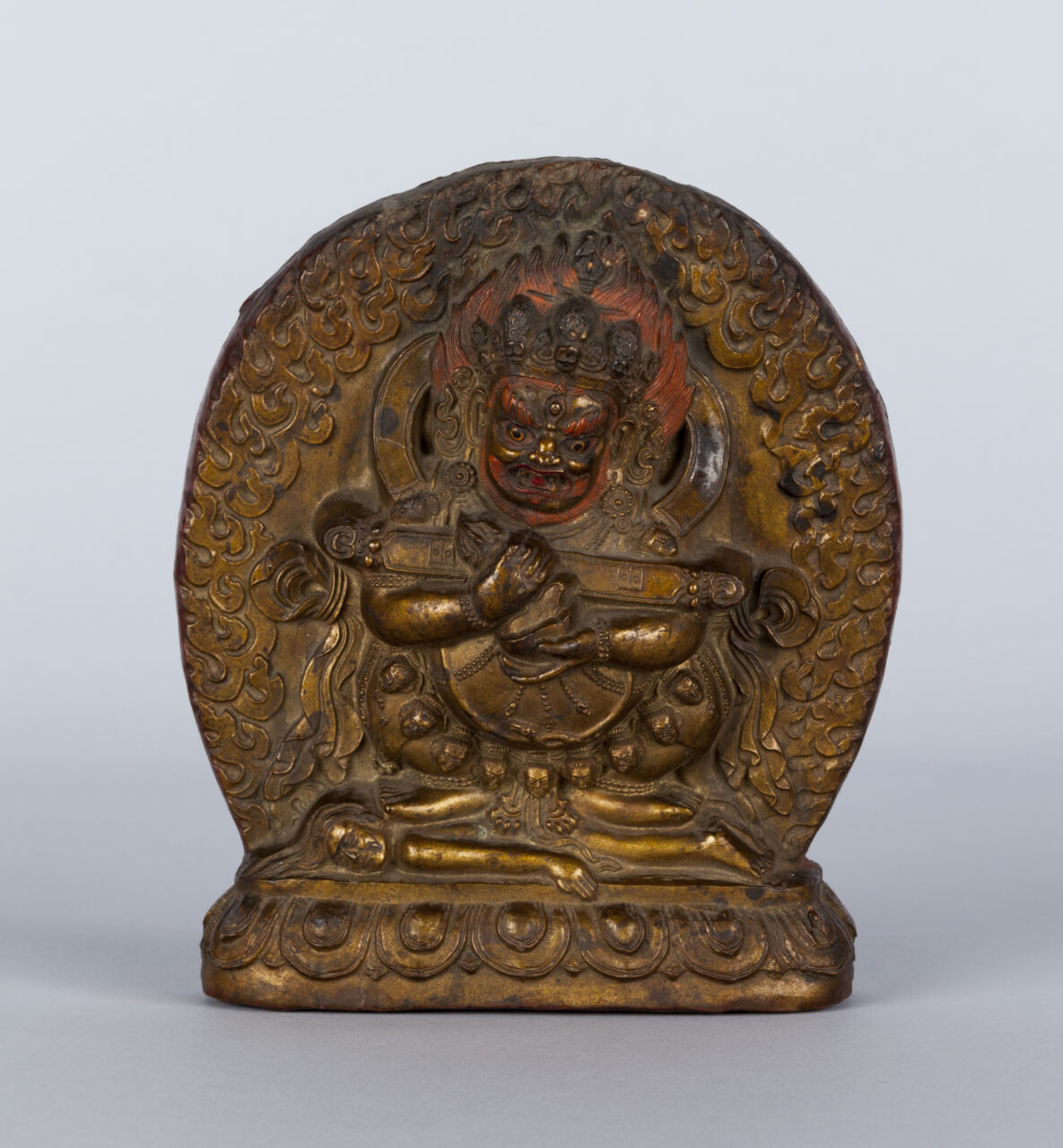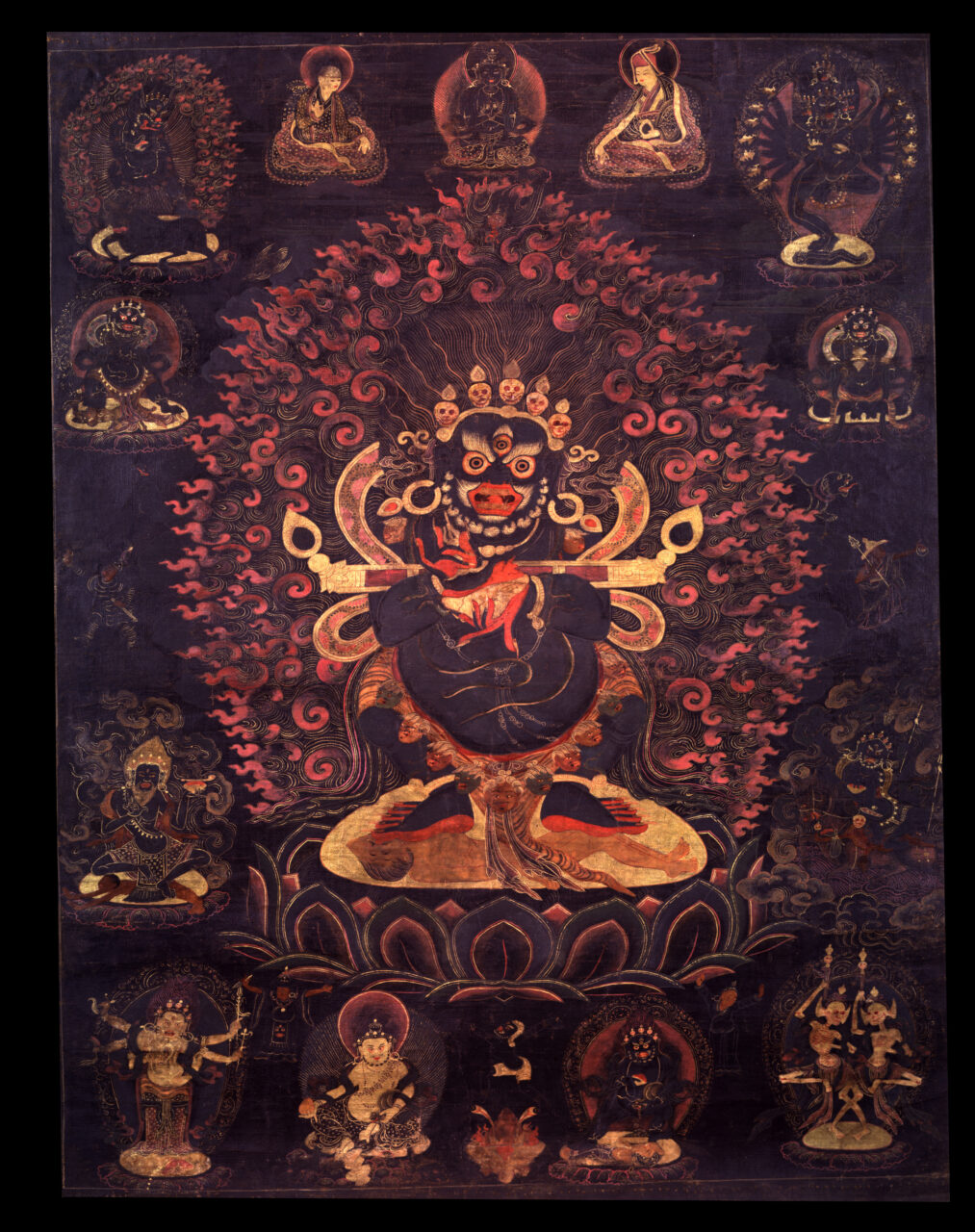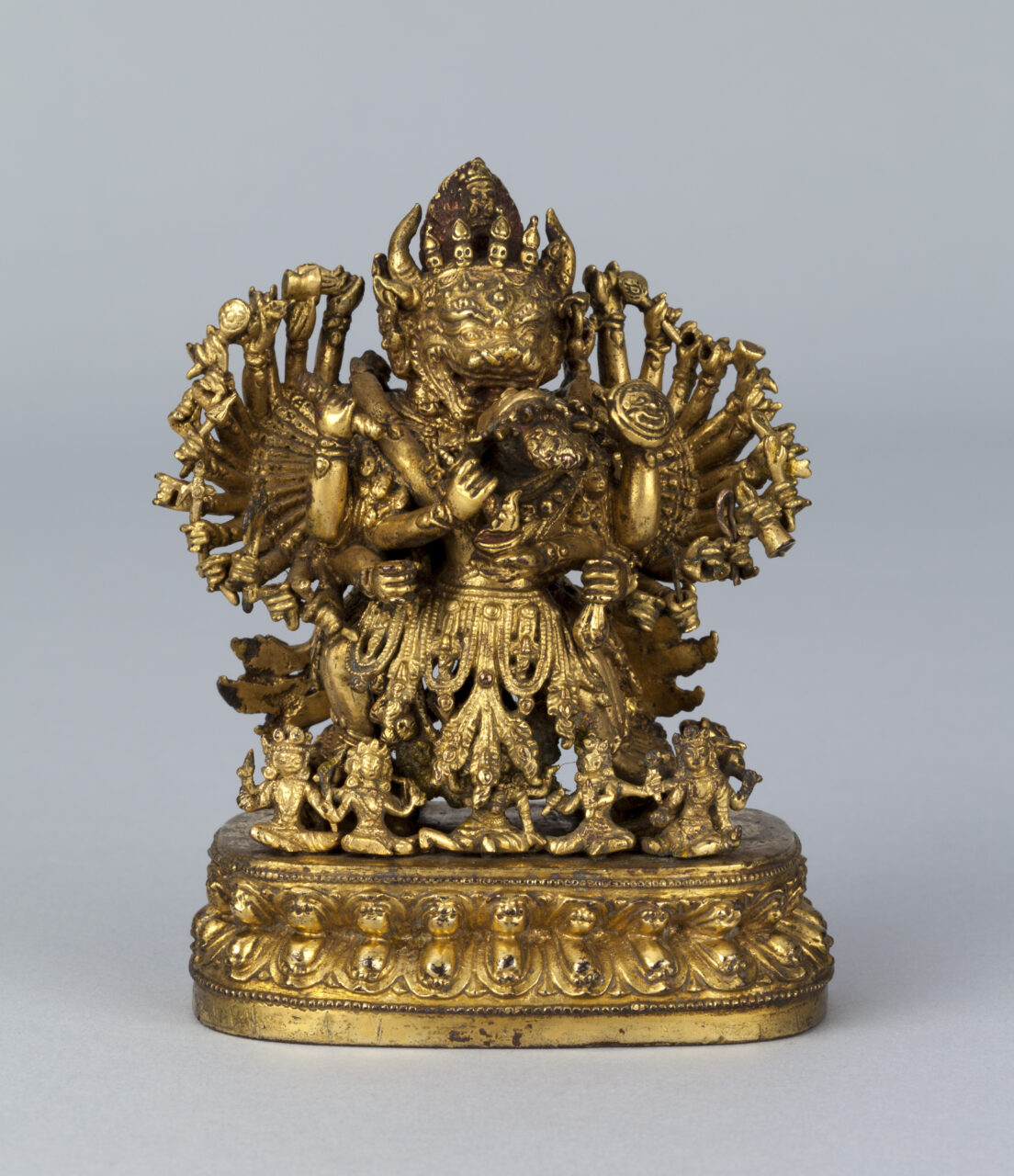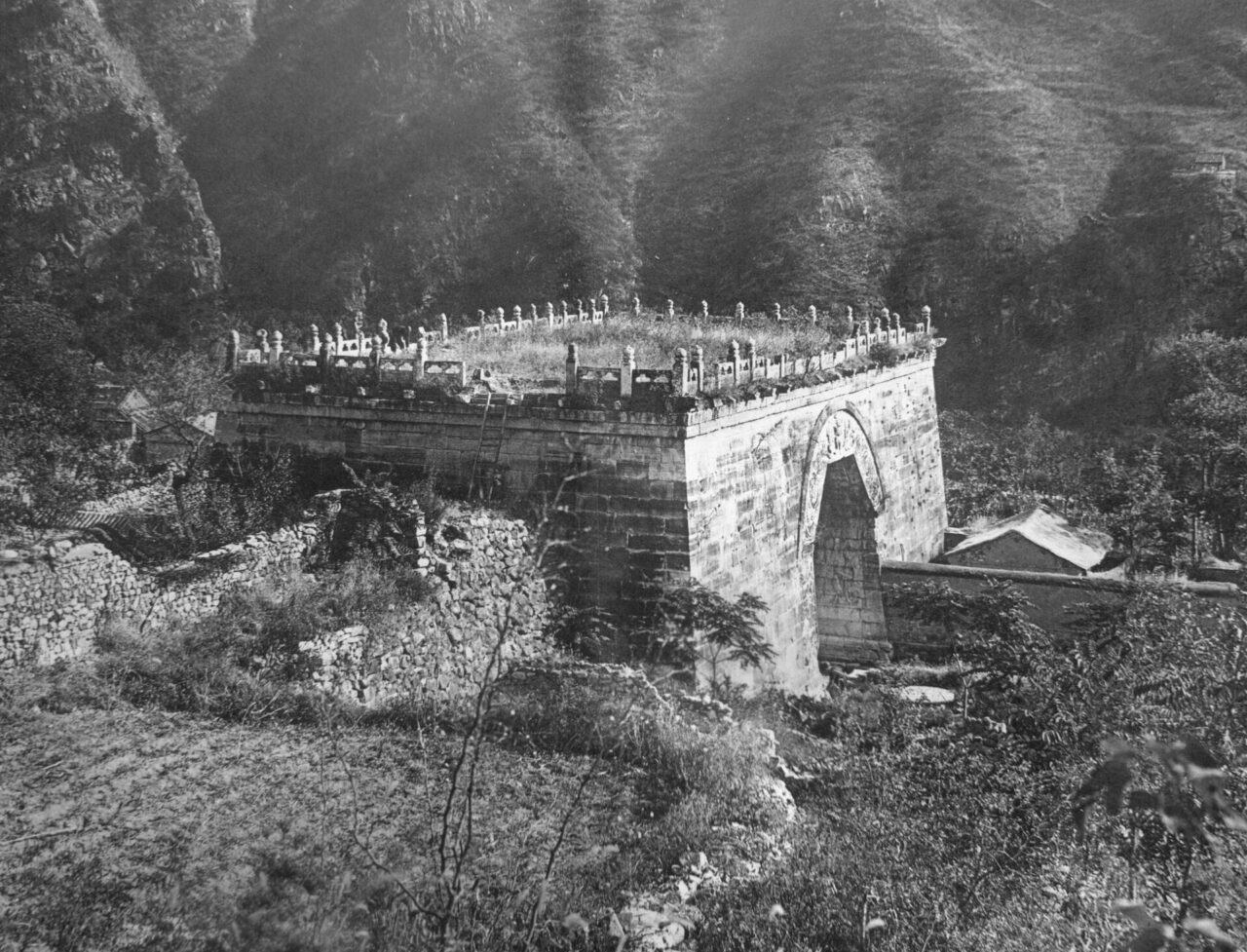Karl Debreczeny
Senior Curator, Collections and Research
Rubin Museum of Art
In the thirteenth century, the Mongols conquered most of Asia and facilitated the spread of Tibetan Buddhism and visual culture to the Chinese heartland. The Mongol Empire brought many disparate peoples and traditions together sparking cross-cultural exchange. Mongol Emperor Qubilai Khan relied on peoples from other areas of his empire–such as the Tanguts and Tibetans. Tibetan Buddhism played prominent religious, artistic, and political roles in the courts of his Yuan dynasty.
Critical Questions Permalink
- How did religion help expand empires?
- Why did the Mongolians choose Tibetan Buddhism?
- How did religious institutions benefit from state support?
Exhibition Permalink
A few objects in the exhibition support this topic as the starting points.
Wrathful Deities
Secular Aims
Object Essays Permalink
This topic is largely supported by the publication, including the following essays.
Further Resources Permalink
Rubin Museum of Art Web Resources
Map Animation – Inner Asian Empires Engaged with Tibetan Buddhism
Publication – Faith & Empire – Art and Politics in Tibetan Buddhism
Article – War Magic: The Wizarding World of Tibetan Sorcery
Other Resources
Atwood, Christopher P. 2004. Encyclopedia of Mongolia and the Mongol Empire. New York: Facts on File: “Mongol Empire” pp. 365-369 (5pp); “Tibet and the Mongol Empire” pp 538-540 (3pp), “Yuan dynasty” pp. 603-612 (8pp) https://www.academia.edu/8855875/Encyclopedia_of_Mongolia_and_the_Mongol_Empire
Glossary Terms Permalink
The Yuan dynasty (1271–1368) is the branch of the Mongol Empire in Asia. In 1260 when Qubilai Khan declared himself Great Khan, his realm included Mongolian, Chinese, Tangut, and Tibetan regions. In 1271 emperor Qubilai Khan proclaimed the Yuan dynasty on a Chinese model, employing Tibetan and Tangut monks. Tibetan Buddhism played an important role in the state, establishing a political model that would be emulated by later dynasties, including the Chinese Ming and Manchu Qing dynasties. The Mongols were major patrons of Tibetan institutions, and many Mongols converted to Tibetan Buddhism, though their interest declined with the fall of the empire.
Manjushri is one of the most important bodhisattvas in Mahayana and Vajrayana Buddhism. Considered the embodiment of wisdom, Manjushri is often recognized by his attributes: a sword which cuts through ignorance and a book, the Prajnaparamita (Perfection of Wisdom) Sutra. Emanations of Manjushri can also be recognized by these same attributes. Another important Chinese iconographic tradition depicts a youthful Manjushri riding on a lion. This form is associated with Manjushri’s abode on earth, Mount Wutai in China, one of the few Buddhist sites in China visited by Tibetan and Mongol pilgrims among others from all over Asia. Manjushri was seen as the protector deity of China, and the Manchu emperors of the Qing Dynasty who claimed to be emanations of Manjushri emphasized/promoted this association.
wrathful
In Hinduism, Buddhism, and Bon, some gods and deities are shown with flaming hair, bulging eyes, mouths showing fangs, adorned with garlands of severed heads, and trampling enemies, real or metaphorical. In Tantric Buddhism, such deities are said to be wrathful manifestations of wisdom and method who assume fierce appearance to protect, remove or overcome mental afflictions blocking the path to enlightenment. Others are unenlightened, indigenous gods bound by oath to protect Buddhist traditions. Some female deities, or dakinis, like Vajrayogini, appear as semi-wrathful, in beatific form but bearing small fangs. In the Bon tradition, similarly to Tibetan Buddhism, wrathful deities can be emanations or represent local gods and sprits. In Hindu traditions, gods and goddesses can appear fierce, holding many weapons meant to overcome demons.
In Vajrayana Buddhism, Mahakala is one of the eight great wrathful dharma protectors, a remover of obstacles, both internal and external. Mahakala has many forms, but is generally depicted as a fierce deity with a large belly, dark blue or black in color. One especially important form is the Panjaranatha Mahakala, “Lord of the [Bone] Pavilion,” who was a special protector of the Sakya tradition of Tibetan Buddhism and its imperial Mongol patrons. Forms of Mahakala also appear in Hinduism, where the deity is associated with Bhairava.
Vajrabhairava is a meditational deity (yidam) and also sometimes a protector deity in Vajrayana Buddhism. Vajrabhairava is usually depicted as a blue wrathful deity with the head of a buffalo, sometimes in union with a consort, Vajravetali. Vajrabhairava is a wrathful emanation of Manjushri, whose peaceful head tops his own.
Stupas are monuments that initially contained cremated remains of Buddha Shakyamuni or important monks, his disciples, and subsequently other material and symbolic relics associated with the Buddha’s body, teaching, and enlightened mind. As representations of the Buddha’s presence in the world, stupas with their contents—texts, relics, tsatsas—continue to be important objects of Buddhist worship in their diverse forms of domed structures, multistoried pagodas, and portable sculptures. The original form of stupas was an earthen dome-shaped mound containing the remains in reliquary vessels or urns deposited within the innermost core. The dome would often be successively enlarged and surrounded by a path for a walk around in a clockwise direction and veneration (circumambulation)
In Mahayana and Vajrayana Buddhism, a dharani is a short, Sanskrit language text or spell-like formulas thought to have protective power when written or recited out loud, often as part of a ritual. Often inscribed on objects or at sacred sites, their power through the written physical presence is associated with long life, purification, and protection. Dharanis are similar to mantras, but usually longer. One important dharani is the Ushnishavijaya Dharani. The Pancharaksha is another important text that contains five dharanis of protection.
In Mahayana Buddhism, Ushnishavijaya was the name of a particular dharani incantation popular across the Buddhist world. In the Vajrayana tradition, Ushnishavijaya became personified as a deity, usually depicted as a serene white six-armed female. Ushnishavijaya rituals are often performed as wishes for long-life, and the deity is one of the three deities of long-life, along with Amitayus and White Tara.
Mongol Empire
The Mongol Empire (ca 1206–1368) was the largest contiguous empire in world history, founded by Chinggis Khan (1162–1227), which at its height controlled most of Eurasia, from the Korean peninsula to Central Europe. The Mongols conquered the Tanguts in 1227 and absorbed Tibetan regions in the 1240s, granting power over central Tibet to the Sakya Buddhist hierarchs in what is characterized as a priest-patron relationship. In 1260, Qubilai Khan declared himself Great Khan, which was contested, fracturing the Mongol Empire into four independent regimes. Qubilai remained the ruler of most of Asia establishing the Yuan dynasty. Mongol rulers of Yuan, and the first six rulers the Ilkhanate in the Middle East, starting with its founder Hülegü, were also patrons of Tibetan Buddhism.
A “priest-patron” relationship is one in which a secular ruler supports the Buddhist monastic hierarchy with gifts of land, wealth, and protection, while Buddhist masters perform rituals on behalf of the ruler and the state. This arrangement defined Tibetan Buddhists’ relationships with rulers, including Mongol Khans or the Manchu emperors. The relationship between the Mongol emperor Qubilai Khan and the Tibetan imperial preceptor Pakpa became emblematic of this system.
A chakravartin is an ideal of Buddhist kingship, a universal ruler who supports the sangha and “turns the wheel of the Dharma.” Since the time of Emperor Ashoka (304–232 BCE), the archetypal chakravartin, many Buddhist rulers in history have been praised as chakravartins, or rulers who support Buddhism and help its spread through the expansion of his domains.
Additional Keywords Permalink
- Paizi




